Paul Bowman – Kyusho Jitsu – Under pressure
UnderPressure.avi
Description
PAUL BOWMANGrandmaster Paul Bowman, 8th Dan is the founder of Zendoryu Martial Arts and has been studying all types of Martial Arts for over 43 years. Grandmaster Paul Bowman teaches Martial Artists all around the world, although still finds time to run a family run club in Enfield.Not only will this training teach you an excellent understanding of Shotokan Karate mixed with Kyusho Jitsu (Pressure Points) you can also use this training as self defence and keep fit at the same time!Welcome to our home page. I have spent the last 40 years exploring and teaching martial arts.It was not until meeting the likes of Master George Dillman, Professor Wally Jay and Professor Remy Presas that I truly realised that there was something amiss.I have now been training under Master George Dillman for 15 years and am now an official DKI Representative in the United Kingdom. Teaching kyusho jitsu (pressure points) alongside with Shotokan Karate, and incorporating Small Circle and Modern Arnis theories and concepts, combine to create a unique system.We offer YOU the chance to experience this for yourself . This system can be used as a complete style or used in conjunction with any other methods.I hope that you enjoy viewing this web site , and invite you to return soon, as this web site will be edited and updated frequently.UNDER PRESSURE – Over 40 Knockouts using Pressure Points!This is an instructional DVD into the world of Kyusho Jitsu (Pressure Points). This DVD is the 1st DVD ever produced by Grandmaster Paul Bowman and is a back to basics DVD with Classic footage.Paul Bowman and his students use basic Kyusho Jitsu (Pressure Points) to demonstrate over 40 Knockouts!If you have never studied Kyusho Jitsu (Pressure Points), maybe you study a different style of martial arts or just don’t believe that Knockouts are possible then you need to watch this DVD.The Pressure Point knockouts used in this DVD only need the lightest of touches and with practice these techniques will enhance your martial art and pressure point training.Warning: This DVD does contain dangerous techniques which should only be practiced under a qualified instructor.KYUSHO JITSUA pressure point (Japanese: kyūsho 急所 “vital point, tender spot”; Chinese: 穴位; Malayalam marmam) in the field of martial arts refers to an area on the human body that may produce significant pain or other effects when manipulated in a specific manner. Techniques of attacks on pressure points are called, Hyol Do Bup (Hangul: 혈도법; 穴道法) in Korean martial arts, such as Hapkido, Sin Moo Hapkido, Han Mu Do, and kyūsho-jutsu (Japanese: きゅうしょじゅつ) in various styles of Japanese martial arts, such as Jujutsu, Aikido, Tenjin_Shinyō-ryū, Daitō-ryū Aiki-jūjutsu, Kotō-ryū, Gōjū-ryū, Sekiguchi-ryū, Yōshin-ryū, Kuma-ryū, Kōga-ryū and Karate.The concept of pressure points is present in old school (17th century) Japanese martial arts and is claimed to have an even earlier history; in a 1942 article in the Shin Budo magazine, Takuma Hisa Sensei asserted the existence of a tradition attributing the first development of pressure-point attacks to Shinra Saburō Minamoto no Yoshimitsu (1045–1127).Handcock and Higashi (1905) published a book which pointed out a number of vital points in Japanese martial arts.Exaggerated accounts of pressure-point fighting have appeared in Chinese Wuxia fiction, and became known by the name of Dim Mak or “Death Touch” in western popular culture from the 1960s. One of the best known uses of pressure-point fighting was known to Trekkies as the “Vulcan nerve pinch.” While it is undisputed that there are sensitive points on the human body where even comparatively weak pressure may induce significant pain or serious injury, the association of kyūsho with esotericist notions of qi, acupuncture or reflexology is controversialThere are several types of pressure points – each is applied differently and each creates a different effect. “Pain points”, for example, use tendons, ligaments, and muscles – the goal to temporarily immobilize the target, or at the very least to distract them. Reflex points produce involuntary movements, for example causing the hand to release its grip, the knees to buckle, or the target to gag, or even for the person to be knocked unconscious. Most pressure points are located on pathways on the nervous system.PainSome pressure points produce pain when struck, pressed, or rubbed depending on the point itself. These are also referred to as nerve centers. While the distraction of pain might offer sufficient advantage in a fight or escape, additionally the body has a Pain withdrawal reflex whereby it reacts to pain by moving away from the source. Martial artists can make use of this through minimal effort. Applying pressure to the collar bone from above will cause the subject to move downwards, whereas poking them upwards in the gap between the ear and neck will make their body want to move upwards. Pressure to the shoulder causes that side of the body to move back. A jab to the abdomen in the middle of the stomach will cause some people to twist around, away from the pain. A rapid impact – say from an elbow or fist – to the solar plexus can easily knock all the air straight out of a victim, leaving them gasping for air and unable to move. Some points react more violently to pain from changes in the pressure (rubbing) rather than constant pressure. Applying pressure to the nose or temple will also cause significant pain. Some other of these pressure points are: eyes, ears, throat, elbow joint, wrist, back of hand, collar bone, solar plexus, ribs, between shoulder blades, kidneys, groin, upper inner thigh, knee, shin, instep and Achilles tendon. Some of the parts of your body that you can use to apply pressure or brute force to these areas are: fist, knuckles, knife hand, palm strike, elbow, knees and feet. Using these pressure points can be effective means of self defense when attacked by a larger opponent.Blood & blood pressureThe baroreceptors in the carotid artery are pressure-sensitive, supplying the brain with information to control systemic blood pressure. Pressure against this region will send signals which indicate that blood pressure is too high and lead to a lowering of blood pressure. Therefore striking this area can cause unconsciousness using the same mechanism, also relying on the force being transmitted to the reticular activating system.BreakThere are certain areas which are likely to lead to a break if struck properly, such as the “floating ribs”, the philtrum, and the side of the knee.Hyper-extensionThere are joints that when struck, can be hyper-extended and even tear. This is a technique which can cause permanent damage to one’s opponent. There are two types:Brute force: This takes advantage of the vulnerability of the strike point, usually a joint, thereby causing the damage.Golgi organs: A relatively gentle strike to the Golgi tendon at the back of the elbow, for example, triggers a reflex which immediately relaxes that tendon allowing the elbow to bend more easily in the wrong direction. If this is immediately followed by a solid strike to the elbow joint, the elbow can be broken with significantly less effort than through brute force.ConcussionThe brain is a sensitive organ which floats in a fluid (cerebrospinal fluid) and balances on a very flexible spine. These safety mechanisms allowing the head to take substantial impact without resulting in concussion, but which can still cause permanent brain damage. However, martial art techniques can be delivered in a way which effectively eliminates such protections, thus causing disorientation or instantaneous knockout. The most commonly taught technique involves a strike just below the occipital ridge, at the correct angle in the correct direction. Another well known point with this effect is the chin or lower jaw, giving rise to the boxing expression: a “glass jaw”. The same effect of knocking somebody unconscious may be achieved by using the edge of the hand (palm-up) to apply a sharp strike to the carotid artery.EnergyFurther information: Dim Mak and George DillmanSome believe there are energy channels (acupuncture meridians) which allow Qi (life-force) to flow through the body. Acupuncture is the best known use of the meridian system. Traditional Chinese medicine practices are largely based on the idea that meridians are specific pathway lines in the human body, along which are found many hundreds of acupressure points. There is no physically verifiable anatomical or histological basis for the existence of Ki, acupuncture points or meridians.According to these legends, attacks will impact the flow of Ki, and thus the body. Therefore pressing, seizing or striking these points with specific intent and at certain angles is believed to cause either a heightening or diminishing of Ki circulation in the body. Arts such as Bak Mei and Bok Foo Pai utilize this strategy almost exclusively in combat.Enjoy!!!
You must be logged in to post a review.

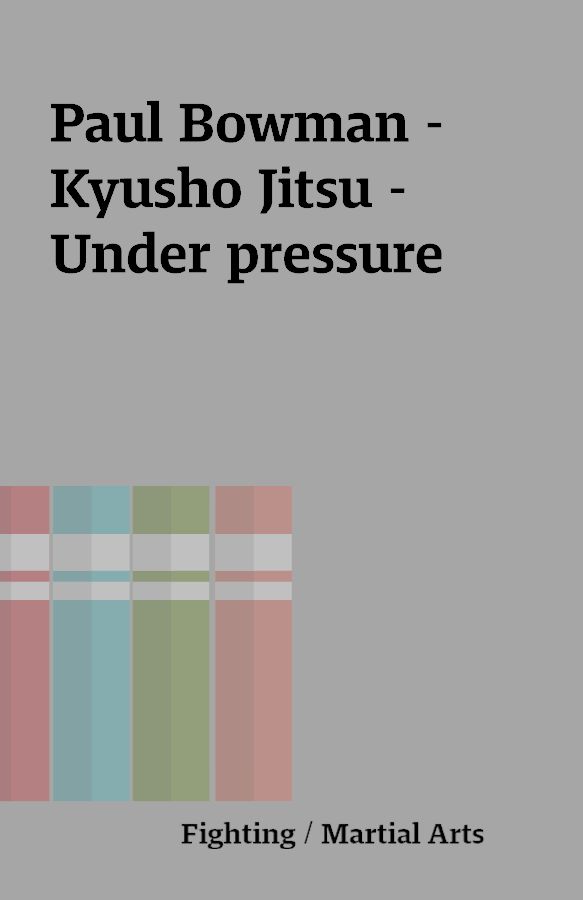
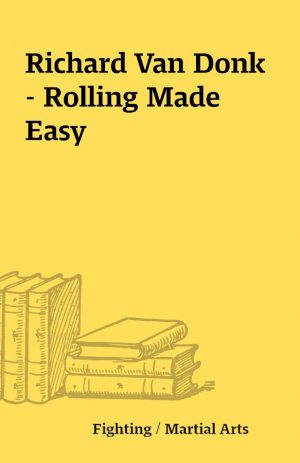
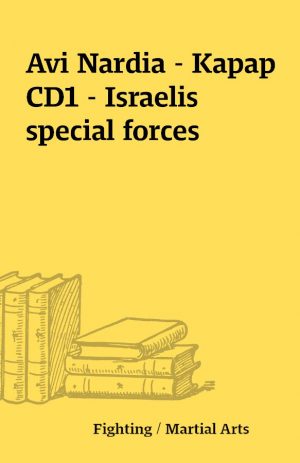
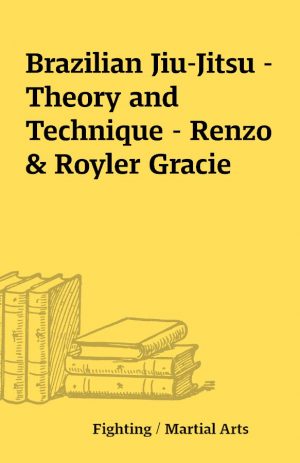
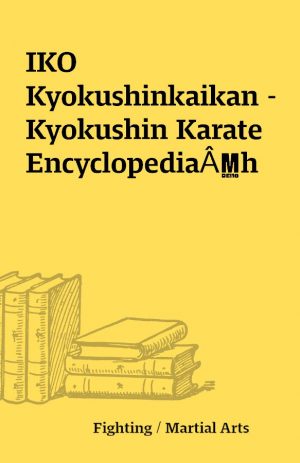
Reviews
There are no reviews yet.